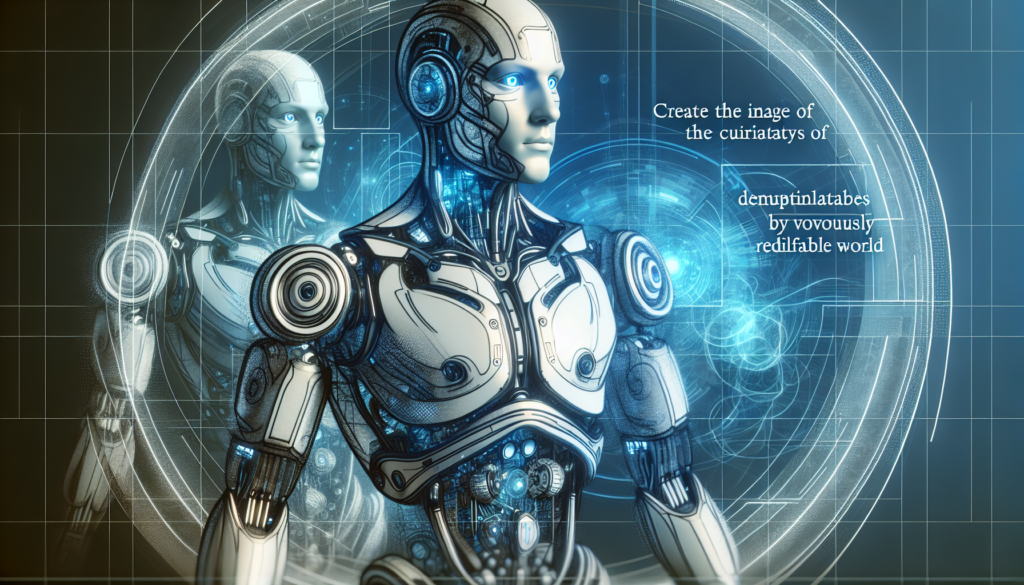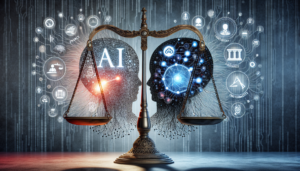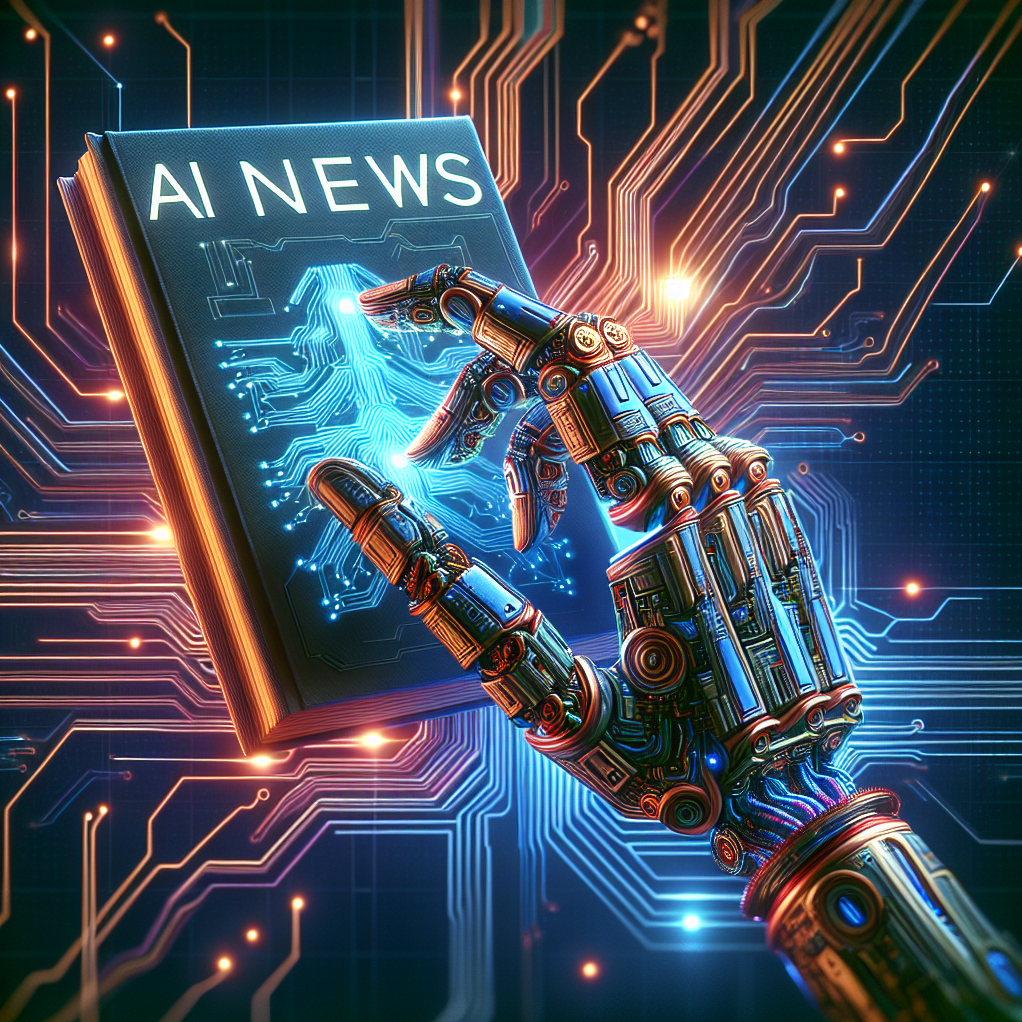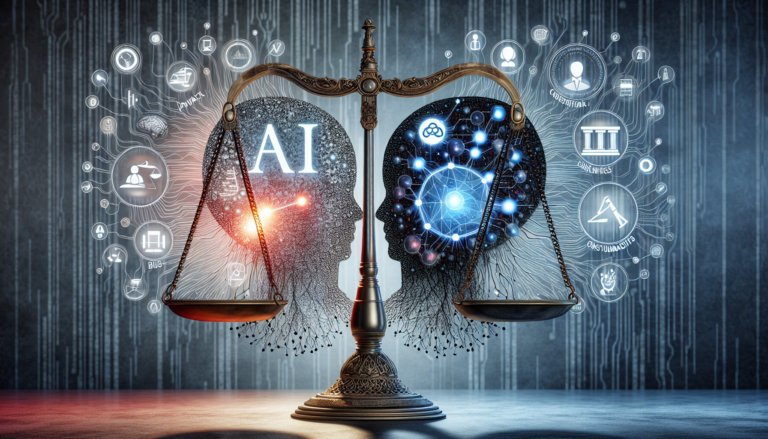In the “Introduction to Artificial Intelligence for Beginners: Full Course Tutorial by Edureka,” you will dive into a comprehensive and detailed exploration of Artificial Intelligence concepts. This video tutorial covers a wide range of topics, including the history of AI, its applications, different types of AI, and programming languages used in AI development. Furthermore, you will also gain insights into Machine Learning, Deep Learning, and Natural Language Processing, along with their applications and limitations.
As the tutorial progresses, you will learn about real-world examples of AI implementation, such as Google’s predictive search engine, JP Morgan Chase’s Contract Intelligence Platform, and IBM Watson’s medical diagnosis capabilities. Additionally, you will discover how social media platforms, virtual assistants, self-driving cars, and even Netflix utilize AI technology to enhance user experiences. Moreover, the tutorial delves into the core components of Machine Learning, such as training data, testing data, machine learning algorithms, and model evaluation. Classification, regression, and clustering algorithms are explained in detail, along with the importance of data cleaning and exploratory data analysis in the machine learning process. The use of popular programming languages like Python, R, Lisp, and Prolog for AI development is also discussed, providing you with a well-rounded understanding of the field.
Introduction to Artificial Intelligence
Artificial Intelligence (AI) is a branch of computer science that focuses on creating intelligent machines capable of performing tasks that typically require human intelligence. AI has revolutionized various industries by automating processes, enhancing decision-making, and improving efficiency. In this article, we will provide a comprehensive overview of AI, including its history, demand, applications, types, and the programming languages commonly used for AI development.
History of AI
The concept of AI dates back to ancient times, but its formal development began in the 1950s. The field initially aimed to create machines that could mimic human intelligence and perform tasks such as problem-solving and logical reasoning. Early pioneers of AI, such as Alan Turing and John McCarthy, laid the foundation for the field’s development.
Over the years, AI has evolved significantly, thanks to advancements in technology and computing power. Some notable milestones include the development of expert systems in the 1970s, which were designed to replicate the decision-making capabilities of human experts, and the emergence of Machine Learning in the 1980s, which enabled machines to learn from data.
Demand for AI
The demand for AI has grown exponentially in recent years, fueled by advancements in computation power, the availability of large datasets, and better algorithms. Industries across the board, including healthcare, finance, manufacturing, and transportation, are leveraging AI to streamline processes, enhance efficiency, and gain a competitive edge.
AI has the potential to transform various areas of our lives, from autonomous vehicles and virtual assistants to personalized recommendations and predictive analytics. With its ability to automate repetitive tasks and analyze vast amounts of data, AI is revolutionizing the way businesses operate and improving the quality of our daily lives.
AI Applications
AI finds applications in various domains, bringing significant benefits to businesses and society as a whole. Some notable applications of AI include:
-
Healthcare: AI is used to diagnose diseases, analyze medical data, and develop personalized treatment plans. IBM Watson, for example, has been used to assist doctors in diagnosing rare medical conditions by cross-referencing millions of medical records.
-
Finance: AI is employed in fraud detection, algorithmic trading, and risk assessment. It helps financial institutions make more informed decisions, mitigate risks, and improve customer experiences.
-
Manufacturing: AI-powered robots and automation systems are used to optimize production processes, improve quality control, and increase efficiency. These systems can perform repetitive tasks with precision and accuracy, enhancing productivity and reducing costs.
-
Transportation: AI is revolutionizing the transportation industry with the development of self-driving cars and intelligent traffic management systems. These technologies have the potential to enhance road safety, reduce congestion, and improve overall transportation efficiency.
-
Customer Service: Virtual assistants, such as Siri, Alexa, and Google Duplex, use AI to respond to customer queries, book appointments, and mimic human-like conversations. These assistants provide personalized and efficient customer service, enhancing user experiences.
Types of AI
AI can be broadly classified into three categories: Narrow AI, General AI, and Superintelligence.
-
Narrow AI: Also known as Weak AI, Narrow AI is designed to perform specific tasks within a limited domain. It excels in a particular area, such as speech recognition or image classification, but lacks the ability to generalize beyond its domain.
-
General AI: General AI refers to machines that possess the ability to understand, learn, and apply their intelligence across multiple domains. General AI aims to replicate human-level intelligence and perform tasks that require reasoning, problem-solving, and critical thinking.
-
Superintelligence: Superintelligence represents the hypothetical future state of AI, where machines surpass human intelligence in all aspects. Superintelligent machines would possess capabilities far beyond human comprehension and could potentially outperform humans in every intellectual task.
While Narrow AI is the most prevalent form of AI today, researchers and experts are continuously working towards achieving General AI and exploring its potential benefits and ethical implications.
Programming Languages for AI
Several programming languages are widely used in AI development. The choice of programming language depends on factors such as the complexity of the project, available resources, and the specific AI application. Some popular programming languages for AI include:
-
Python: Python is one of the most popular programming languages for AI and machine learning. It offers extensive libraries, such as TensorFlow and Keras, that simplify the development of AI models. Python’s simple syntax and readability make it an ideal choice for beginners.
-
R: R is another widely used programming language for data analysis and statistical modeling, making it suitable for AI applications. It provides a vast array of packages specifically designed for machine learning and data science.
-
Lisp: Lisp is considered the oldest and most suited language for AI development. It was invented by John McCarthy, one of the pioneers of AI, and its syntax is well-suited for manipulating symbolic and numerical data.
-
Prolog: Prolog is frequently used in the development of knowledge-based and expert systems for AI. It excels in representing and reasoning with logical facts and rules, making it suitable for applications that require efficient rule-based inference.
-
Java: Java is a versatile language used for various purposes, including AI development. It provides a wide range of libraries and tools for machine learning, and its object-oriented approach and platform independence make it a popular choice among developers.
The choice of programming language ultimately depends on the specific requirements of the AI project, the available resources, and the developer’s familiarity with the language.
Introduction to Machine Learning
Machine Learning (ML) is a subset of AI that focuses on enabling machines to learn from data and improve their performance without being explicitly programmed. ML algorithms allow computers to identify patterns, make predictions, and make decisions based on previous experience.
Types of Machine Learning
Machine Learning can be classified into three broad types:
-
Supervised Learning: Supervised learning involves training a machine learning model using labeled data. The model learns the relationship between input features and corresponding output labels, allowing it to make predictions on new, unseen data. Supervised learning algorithms are commonly used for tasks such as regression and classification.
-
Unsupervised Learning: Unsupervised learning involves training a model using unlabeled data. The algorithm learns patterns and structures in the data without any predefined output labels. Unsupervised learning algorithms are commonly used for tasks such as clustering and anomaly detection.
-
Reinforcement Learning: Reinforcement learning involves training an agent to interact with an environment, learn from the consequences of its actions, and optimize its behavior to maximize rewards. Unlike supervised and unsupervised learning, reinforcement learning does not have a predefined dataset and relies on trial and error.
Supervised Learning Algorithms
Supervised learning algorithms are used when the relationship between input features and output labels is known. Some common supervised learning algorithms include:
-
Linear Regression: Linear regression is a straightforward algorithm used for predicting continuous values. It models the relationship between input features and output labels using a linear equation.
-
Logistic Regression: Logistic regression is used for binary classification problems, where the output labels are in two classes. It calculates the probability of an input belonging to a specific class using a logistic or sigmoid function.
-
Decision Trees: Decision trees are versatile algorithms that can handle both regression and classification problems. They construct a tree-like model of decisions and their possible consequences. Decision trees are easy to interpret and can handle both numerical and categorical data.
-
Random Forest: Random forest is an ensemble method that combines multiple decision trees to make predictions. It improves the accuracy and robustness of the model by reducing overfitting and increasing generalization.
-
Naive Bayes Classifier: Naive Bayes is a probabilistic classifier that calculates the probability of an input belonging to a specific class based on Bayes’ theorem. It assumes independence between features and makes strong feature assumptions.
Each supervised learning algorithm has its strengths and weaknesses and is suitable for specific types of problems. The choice of algorithm depends on factors such as the nature of the data, the availability of labeled data, and the desired outcome.
Unsupervised Learning Algorithms
Unsupervised learning algorithms are used when the relationship between input features and output labels is unknown or not required. Some common unsupervised learning algorithms include:
-
Clustering: Clustering algorithms group similar data points together based on the features and patterns present in the data. Clustering is useful for exploratory data analysis, customer segmentation, and anomaly detection.
-
Dimensionality Reduction: Dimensionality reduction algorithms aim to reduce the number of input features while preserving the essential information. These algorithms are useful for visualizing high-dimensional data and improving computational efficiency.
-
Association Rule Learning: Association rule learning algorithms identify patterns and relationships between different variables in the data. They are commonly used for market basket analysis and recommendation systems.
Unsupervised learning algorithms provide valuable insights into the underlying structure and patterns in the data, enabling organizations to make informed decisions and uncover hidden relationships.
Reinforcement Learning
Reinforcement learning is a type of learning that focuses on training an agent to make decisions and take actions in an environment to maximize rewards. The agent interacts with the environment and learns from the consequences of its actions.
Reinforcement learning involves the following components:
- Agent: The entity that interacts with the environment and makes decisions.
- Environment: The external world with which the agent interacts.
- State: The current configuration or situation of the environment.
- Action: The decision made by the agent based on the state.
- Reward: The feedback provided to the agent based on its actions.
- Policy: The strategy or plan the agent follows to make decisions.
Through trial and error, the agent learns to navigate the environment and optimize its behavior to maximize rewards. Reinforcement learning has been successfully applied in various domains, including game playing, robotics, and optimization problems.

Introduction to Deep Learning
Deep Learning is a subfield of machine learning that focuses on training artificial neural networks to learn from large amounts of data and make intelligent decisions. Deep learning models consist of multiple layers of interconnected neurons, inspired by the structure and function of the human brain.
Deep Learning has gained significant attention and popularity due to its ability to solve complex problems and achieve state-of-the-art performance in various domains.
Natural Language Processing
Natural Language Processing (NLP) is a branch of AI that focuses on the interaction between computers and human language. NLP enables machines to understand, interpret, and generate human language, allowing for tasks such as language translation, sentiment analysis, and chatbot systems.
NLP involves several techniques, including text preprocessing, part-of-speech tagging, named entity recognition, and sentiment analysis. These techniques enable machines to process and understand human language, opening up a wide range of applications in areas such as virtual assistants, language translation, and text summarization.
Text Mining
Text Mining is the process of extracting valuable information and insights from large amounts of unstructured text data. It involves techniques such as text classification, information extraction, and sentiment analysis.
Text mining is commonly used in applications such as document categorization, spam detection, and sentiment analysis of customer reviews. By analyzing and extracting useful information from text data, organizations can gain valuable insights and make informed decisions.
NLP Applications
NLP has found applications in various domains, including:
-
Chatbots: NLP enables the development of conversational agents that can provide customer support, answer questions, and simulate human-like conversations.
-
Machine Translation: NLP techniques are used to develop language translation systems that can translate text or speech from one language to another.
-
Information Extraction: NLP algorithms can extract structured information from unstructured text, enabling organizations to automate tasks such as data entry and document analysis.
-
Sentiment Analysis: NLP techniques can analyze text data to determine the sentiment or opinion expressed, enabling organizations to understand customer feedback and make data-driven decisions.
NLP has opened up new possibilities for human-computer interaction and has the potential to revolutionize how we interact with machines and process textual information.
NLP Demo
To illustrate the capabilities of NLP, let’s consider a demo of a sentiment analysis system. Sentiment analysis, also known as opinion mining, is the process of determining the sentiment or emotion expressed in a piece of text.
In our demo, suppose we want to analyze the sentiment of customer reviews for a product. We have a dataset of customer reviews, each labeled as positive or negative. Our goal is to build a sentiment analysis model that can automatically classify new customer reviews as positive or negative.
The steps involved in the sentiment analysis demo are as follows:
-
Data Preprocessing: We begin by preprocessing the text data to remove noise, such as punctuation, special characters, and stopwords. We also convert the text to lowercase and tokenize it into individual words.
-
Feature Extraction: Next, we convert the preprocessed text into numerical features that can be used as input to the machine learning model. This is typically done using techniques such as bag-of-words or word embeddings.
-
Training the Model: We split the data into training and testing sets. Then, we train our sentiment analysis model using a machine learning algorithm such as logistic regression or a deep learning algorithm such as a recurrent neural network.
-
Model Evaluation: After training, we evaluate the performance of our model on the testing data. We measure metrics such as accuracy, precision, recall, and F1 score to assess the model’s effectiveness in classifying customer reviews.
-
Making Predictions: Once the model is trained and evaluated, we can use it to make predictions on new, unseen customer reviews. The model will classify each review as positive or negative based on its sentiment.
Sentiment analysis is just one example of the many applications of NLP. By leveraging NLP techniques, organizations can gain insights from textual data and make informed decisions based on customer feedback, social media conversations, and other forms of text data.
Limitations of Machine Learning
While machine learning has made significant advancements in various domains, it has its limitations. Here are some limitations of machine learning:
Need for Deep Learning
Traditional machine learning algorithms, such as logistic regression and decision trees, may not be effective in solving complex problems that involve unstructured data, high-dimensional data, or non-linear relationships. Deep learning, with its ability to learn hierarchical representations and model complex patterns, is often necessary to tackle such problems.
Deep learning has been successful in domains such as computer vision, speech recognition, and natural language processing. Its ability to understand and learn from large volumes of data with multiple layers of neurons makes it suitable for complex tasks.
Deep Learning Concepts
Deep learning relies on neural networks, which are inspired by the structure and function of the human brain. Neural networks consist of interconnected layers of artificial neurons, also known as nodes or units. Each node takes in input, performs a computation, and produces an output.
Deep learning concepts include:
-
Neural Networks: Neural networks are the building blocks of deep learning models. They consist of layers of interconnected nodes. Each node performs a computation on its input and produces an output. The output of one layer serves as the input for the next layer, allowing the network to learn complex hierarchies of patterns.
-
Backpropagation: Backpropagation is an algorithm used to train neural networks. It involves propagating the error from the model’s output back through the network, adjusting the weights and biases of the nodes to minimize the error. Backpropagation enables the network to learn from its mistakes and improve its predictions.
Neural Networks
Neural networks are the foundation of deep learning. They are composed of interconnected artificial neurons, also known as nodes or units. Neural networks learn from data by adjusting the weights and biases associated with each node.
Neurons receive input from the previous layer, perform a computation using a weighted sum of the inputs, and apply an activation function to produce an output. The weights and biases associated with each neuron are adjusted during the training process to minimize the error or loss function.
Neural networks can have multiple layers, known as hidden layers, between the input and output layers. Each hidden layer learns increasingly abstract representations of the input data, allowing the network to capture complex patterns and relationships.
Backpropagation
Backpropagation is a fundamental algorithm used to train neural networks. It enables the network to learn from its mistakes and adjust its weights and biases to minimize the error or loss function.
The backpropagation algorithm consists of two main steps: forward propagation and backward propagation.
-
Forward Propagation: In this step, the input data is fed through the network, and each neuron performs a computation to produce an output. The output of the network is compared to the desired output, and the error or loss is calculated.
-
Backward Propagation: In this step, the error is propagated back through the network, and the weights and biases of the neurons are adjusted accordingly. The gradients of the loss function with respect to the weights and biases are calculated, and the network’s parameters are updated using optimization algorithms such as gradient descent.
Backpropagation allows neural networks to learn and adjust their parameters iteratively, gradually improving their performance on the task at hand. It forms the foundation of deep learning and is essential for training complex models.

Demos for Machine Learning, Deep Learning, and NLP
Demos for machine learning, deep learning, and NLP provide hands-on examples of how these techniques can be applied to real-world problems. These demos allow users to gain practical experience and understand the capabilities and limitations of these AI technologies.
Demos typically involve the following steps:
-
Problem Definition: Clearly define the problem that needs to be solved. For example, predicting stock prices, classifying images, or generating text.
-
Data Preparation: Gather and preprocess the data required for the demo. This may involve cleaning, normalizing, and transforming the data to a suitable format for the machine learning, deep learning, or NLP model.
-
Model Development: Develop the machine learning, deep learning, or NLP model using the appropriate algorithms and techniques. This may involve selecting the right architecture, training the model on the prepared data, and tuning hyperparameters.
-
Model Evaluation: Evaluate the performance of the trained model on a separate test dataset. Measure metrics such as accuracy, precision, recall, and F1 score to assess the model’s effectiveness.
-
Model Deployment: Deploy the trained model in a suitable environment, such as a web application or cloud service, where it can be used to make predictions or provide insights.
Some popular demos for machine learning, deep learning, and NLP include sentiment analysis of customer reviews, image classification, text generation, and language translation. These demos help users understand how these AI technologies work and showcase their capabilities in solving real-world problems.
Importance and Demand for AI
Artificial Intelligence (AI) is becoming increasingly important and in high demand across various industries. Advancements in computation power, the availability of large datasets, better algorithms, and investments from universities, governments, and tech giants have contributed to the growing importance of AI.
Advancements in Computation Power
The exponential growth of computation power has enabled the development and deployment of more complex AI models. High-performance computing hardware, such as graphics processing units (GPUs) and tensor processing units (TPUs), have accelerated the training and inference processes of AI models. This increased computational power has unlocked new possibilities and allowed AI to tackle larger and more complex problems.
Availability of Large Datasets
AI models require large amounts of data to learn and make accurate predictions. The availability of massive datasets, facilitated by the digitization of information, the internet of things (IoT), and the rise of social media platforms, has fueled the growth of AI. These datasets provide valuable insights and training data to develop and improve AI models.
Better Algorithms
Advancements in machine learning and deep learning algorithms have significantly improved the performance of AI models. Researchers are constantly developing and refining algorithms to achieve state-of-the-art results in various domains. The development of novel architectures, optimization techniques, and regularization methods has allowed AI models to achieve higher accuracies and overcome previous limitations.
Investments from Universities, Governments, and Tech Giants
The importance of AI is further highlighted by the investments made by universities, governments, and tech giants. Universities are actively involved in AI research and education, training the next generation of AI specialists. Governments are recognizing the potential of AI and investing in initiatives to promote its development and adoption. Tech giants such as Google, Amazon, and Microsoft are investing heavily in AI research and development, driving innovation and pushing the boundaries of AI capabilities.
These factors, among others, have contributed to the importance and demand for AI in today’s world. As AI continues to evolve, it is expected to play an even more significant role in shaping various industries and improving our daily lives.
AI in Real-World Applications
Artificial Intelligence (AI) has found real-world applications across various industries. Let’s explore some notable examples:
Google’s Predictive Search Engine
Google’s search engine utilizes AI techniques, including natural language processing and machine learning, to deliver accurate and relevant search results. By analyzing user search history and preferences, Google’s predictive search engine predicts user intent and provides personalized recommendations, making the search experience more efficient and user-friendly.
JP Morgan Chase’s Contract Intelligence Platform
JP Morgan Chase developed a Contract Intelligence (COIN) platform that leverages AI to analyze legal documents and extract key information. COIN can review complex documents much faster and more accurately than manual review, reducing the time and effort required for contract analysis. This AI-powered platform has significantly improved contract analysis and decision-making in the financial industry.
IBM Watson for Medical Diagnoses
IBM Watson, a highly advanced AI system, has been employed in the field of medicine to facilitate medical diagnoses. By cross-referencing millions of medical records, research papers, and clinical guidelines, Watson can assist doctors in diagnosing rare medical conditions and recommending treatment options. This AI-powered system complements the expertise of medical professionals and helps improve patient outcomes.
Social Media Platforms for Facial Recognition and Content Filtering
Social media platforms like Facebook and Twitter utilize AI algorithms for facial recognition, content filtering, and hate speech detection. These platforms leverage AI to identify and tag individuals in photos, filter out inappropriate or offensive content, and detect and remove hate speech. AI enables social media platforms to provide a safe and positive user experience and combat online abuse.
Virtual Assistants for Voice-based Tasks
Virtual assistants such as Siri, Alexa, and Google Duplex utilize AI to respond to voice commands, perform tasks, and engage in natural conversations. These assistants leverage technologies such as natural language processing and speech recognition to understand user queries, book appointments, answer questions, and carry out a wide range of voice-based tasks. Virtual assistants have become increasingly common in our daily lives and are transforming the way we interact with technology.
Self-Driving Cars for Autonomous Navigation
Self-driving cars rely heavily on AI technologies, such as computer vision and deep learning, for autonomous navigation. These cars utilize sensors and cameras to perceive their environment, analyze the data in real-time, and make decisions accordingly. AI algorithms detect objects, interpret road signs, and navigate complex road conditions, improving safety and efficiency on the roads.
Netflix for Personalized Movie Recommendations
Netflix employs AI algorithms to provide personalized movie recommendations to its users. By analyzing user preferences, viewing history, and patterns in movie ratings, Netflix’s recommendation system suggests relevant movies and TV shows tailored to individual tastes. This AI-powered system enhances the user experience and helps users discover new content of interest.
Gmail for Spam Filtering
Gmail uses AI and machine learning algorithms to filter out spam emails from users’ inboxes. The system analyzes the content, sender information, and user feedback to classify emails as spam or non-spam accurately. This AI-powered spam filtering ensures that users receive important and legitimate emails while minimizing unwanted emails in their inbox.
These are just a few examples of how AI is being leveraged in real-world applications across different industries. AI’s ability to analyze vast amounts of data, automate processes, and make intelligent decisions is transforming industries and enhancing various aspects of our lives.
Popular Programming Languages for AI
Choosing the right programming language is crucial for AI development. Here are some popular programming languages used in AI:
Python and R for Machine Learning and Data Science
Python and R are two of the most popular programming languages for machine learning and data science. Both languages offer extensive libraries and frameworks, making them well-suited for AI development.
Python, with its simple syntax and readability, is widely used in AI. It provides powerful libraries such as TensorFlow, Keras, and scikit-learn, which simplify the implementation of machine learning models. Python’s versatility and large community support make it an ideal choice for AI development.
R, on the other hand, excels in statistical modeling and data analysis. It offers a vast array of packages specifically designed for machine learning and data science, such as caret and e1071. R’s strength lies in its ability to handle complex statistical models and generate visualization and reports.
Lisp for AI Development
Lisp, invented by John McCarthy, is considered the oldest programming language specifically designed for AI. Lisp’s syntax and features make it well-suited for the development of AI algorithms. Its ability to manipulate symbolic and numerical data and its support for metaprogramming and dynamic typing make it a powerful language for AI development.
Prolog for Knowledge Base and Expert Systems
Prolog is often used in the development of knowledge-based and expert systems. Prolog’s logical programming paradigm and built-in support for predicate logic and inference make it an ideal choice for AI applications that require rule-based reasoning and symbolic processing. Prolog excels at representing and reasoning with logical facts and rules, making it suitable for expert systems and knowledge-based applications.
Java for Machine Learning and AI Development
Java, known for its scalability and platform independence, is widely used in the development of machine learning and AI applications. Java provides a rich set of libraries and frameworks, such as Deeplearning4j and Weka, which simplify the implementation of machine learning models. Its performance, robustness, and extensive community support make it a popular choice for AI development in the enterprise.
The choice of programming language depends on factors such as the complexity of the AI project, available resources, and the specific requirements of the application. Each programming language has its strengths and weaknesses, and choosing the right language can significantly impact the efficiency and effectiveness of AI development.
Machine Learning Basics
Machine Learning (ML) is a method through which machines can learn from data and make their own decisions without being explicitly programmed. ML algorithms enable computers to identify patterns, trends, and relationships in data, leading to insights and predictions.
Definition and Purpose
Machine learning refers to the process of training a machine learning model using data to make predictions or take actions without being explicitly programmed. The purpose of machine learning is to enable machines to automatically learn from data, identify patterns, and make decisions or predictions based on that knowledge.
ML algorithms are designed to generalize from training data and make accurate predictions on unseen or new data. ML models enable machines to learn from experience, improve their performance over time, and adapt to changing environments.
Increase in Data Generation
The rapid increase in data generation has fueled the growth of machine learning. With the advent of the internet, social media, and the internet of things (IoT), an enormous amount of data is generated every second. Machine learning algorithms are designed to handle large datasets and extract meaningful insights from them, enabling organizations to make data-driven decisions.
Improving Decision Making
Machine learning improves decision-making processes by enabling machines to learn from historical data and make accurate predictions or recommendations. ML models can analyze complex patterns and relationships in data, identify trends, and make informed decisions based on that knowledge. By automating decision-making processes, machine learning improves efficiency and accuracy, leading to better business outcomes.
Finding Patterns and Trends
ML models excel at identifying patterns and trends in data that may not be apparent to human analysts. By analyzing large datasets, ML algorithms can uncover hidden patterns and relationships, enabling organizations to gain valuable insights and make informed decisions. ML’s ability to identify patterns allows businesses to identify new opportunities, optimize processes, and predict future outcomes.
Solving Complex Problems
Machine learning is particularly useful for solving complex problems that involve large amounts of data or have non-linear relationships. ML models can handle high-dimensional data, learn intricate patterns, and make accurate predictions. Whether it’s predicting stock prices, diagnosing diseases, or recommending personalized products, machine learning provides a powerful toolset for tackling complex problems across various domains.
Machine learning has become an essential tool for organizations looking to leverage the power of data and make intelligent decisions. By harnessing the capabilities of ML algorithms, businesses can unlock valuable insights, improve their processes, and gain a competitive edge.
Conclusion
Artificial Intelligence (AI) has become an integral part of our lives, revolutionizing various industries and enhancing our daily experiences. From personalized recommendations and autonomous vehicles to virtual assistants and medical diagnoses, AI has the potential to transform the way we live and work.
In this article, we explored the different aspects of AI, including its history, demand, applications, types, and popular programming languages used for AI development. We also delved into machine learning, deep learning, and natural language processing, providing an overview of their concepts, applications, and demos.
Machine learning, with its ability to learn from data and make predictions, has become a cornerstone of AI. We discussed the types of machine learning, including supervised learning, unsupervised learning, and reinforcement learning, along with popular algorithms and their applications. We also touched upon the limitations of machine learning and the need for deep learning in solving complex problems.
Deep learning, with its neural networks and powerful learning capabilities, has revolutionized AI applications such as computer vision, speech recognition, and natural language processing. Natural language processing, on the other hand, has enabled machines to understand and interact with human language, unlocking the potential for conversational agents and text analysis.
We also highlighted the importance and demand for AI, driven by advancements in computation power, availability of large datasets, better algorithms, and investments from universities, governments, and tech giants. Real-world applications of AI, including Google’s search engine, JP Morgan Chase’s contract intelligence platform, and IBM Watson for medical diagnoses, demonstrate the transformative impact of AI across industries.
Lastly, we discussed the popular programming languages for AI, such as Python, R, Lisp, Prolog, and Java, and their strengths and use cases. We also explored the basics of machine learning, including its definition, purpose, and how it improves decision-making, finds patterns, and solves complex problems.
As AI continues to advance, its impact on society and industry will only grow stronger. By understanding the nuances and applications of AI, we can harness its potential and shape a future where intelligent machines work alongside humans to achieve greater heights.




















